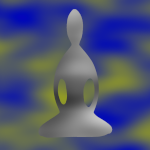Dear Friends,
In Seeking the Heart of Wisdom, Jack Kornfield explains the first hindrance of desire as follows:
The first hindrance is desire for sense pleasure: pleasant sights, sounds, smells, tastes, bodily sensations, and mind states. What’s the problem with desire–what’s wrong with it? Nothing, really. There’s nothing wrong with enjoying pleasant experiences. … But they fool us. They trick us into adopting the “if only” mentality. … There is no problem with enjoying pleasant experiences, and to practice does not mean to dismiss them. But they don’t really satisfy the heart, do they? For a moment we experience a pleasant thought or taste or sensation, and then it’s gone, and with it the sense of happiness it brought. Then it’s on to the next thing.
…
Again, the problems is not the object of desire, but the energy in the mind. The energy of desire keeps us moving, looking for that thing that is really going to do it for us. The wanting mind is itself painful. It’s a self-perpetuating habit that does not allow us to be where we are because we are grasping for something somewhere else. Even when we get what we want, we then want something more or different because the habit of wanting is so strong.
How can we work with the hindrances, in this case desire? Kornfield suggests three approaches:
- Be mindful of the hindrances – transform them to the object of meditation.
“We don’t have to fight to overcome them. Instead, through awareness, we allow their energy to teach us their laws. We learn to experience even their extremes without being caught or overcome by them.” - Cultivate their opposite states as a balance or remedy to help weaken the hindrances and be less entangled with them.
- It is possible to let go of these states as soon as they arise. There’s no aversion in this; rather it’s a choice to redirect the concentration to a more skillful object, like the breath. Kornfield emphasizes that in doing this, we must be careful to maintain steadiness and balance in this approach lest it becomes aversion.
Kornfield gives specific examples if desire arises: we can note “desire, desire”. We can observe desire in the sensations of the body. We can observe how it feels in the heart and mind. We can check if we’re happy or agitated. And as we carefully are paying attention to desire, we may notice that it goes away by itself. Desire is just a thought and feeling that comes and goes.
Another antidote to desire is to practice moderation. Or to reflect on impermanence: “how much will fulfilling this desire mean at the end of our life?”
And one final story that Kornfield shares as an approach to dealing with desire:
“One Indian meditation teacher who had a powerful craving for sweets tried to let go of it in sitting without much success. So one day he went out and bought a huge plate of his favorite sugary sweets. He planned to eat the whole thing, trying to be mindful as he did so. Actually he could hardly begin. By the end of that plate he was sick of sweets and a lot freer of the desire. But we have to pay attention to learn.”
Something heavy like a hindrance needs a poem, don’t you think?
Desire by Mary Oliver
So long as I am hanging on
I want to be young and noble.
I want to be bold.So said the great buck, named Swirlet,
As he stepped like a king past me
The week before he was arrow-killed.And so said the wren in the bush
After another hard year
Of love, of nest-life, of singing.And so say I
Every morning, just before sunrise,
Wading the edge of the dark ocean.
from Red Bird: Poems
Or maybe you’ll like this one from Danna Faulds instead:
http://aplacetobreatheblog1.blogspot.com/2011/07/desire.html
I found a nice 16 minute guided meditation with some reflection on the hindrances
https://www.dharmaseed.org/teacher/99/talk/26212/
(no ending bell!)
With best wishes,
Andrea G
